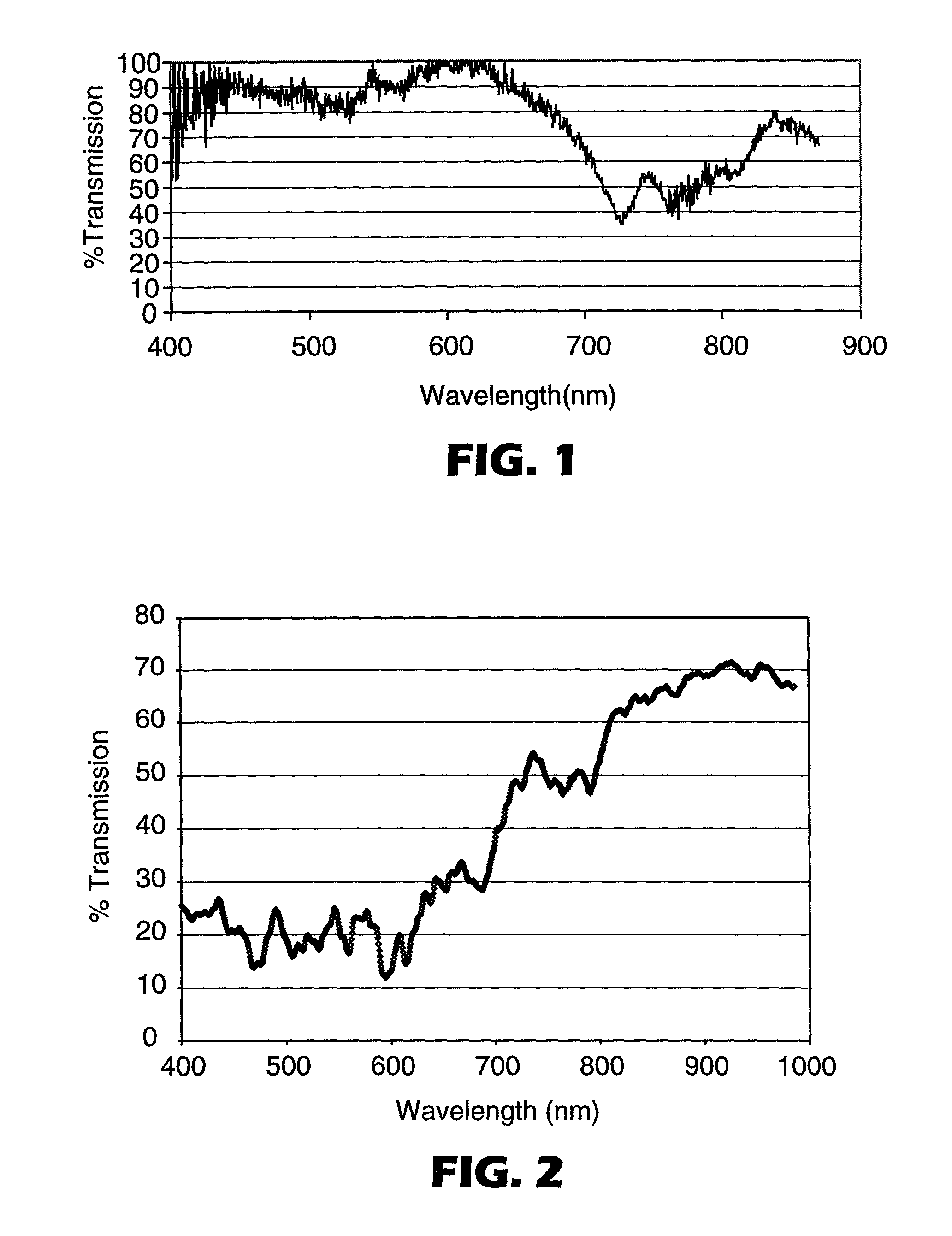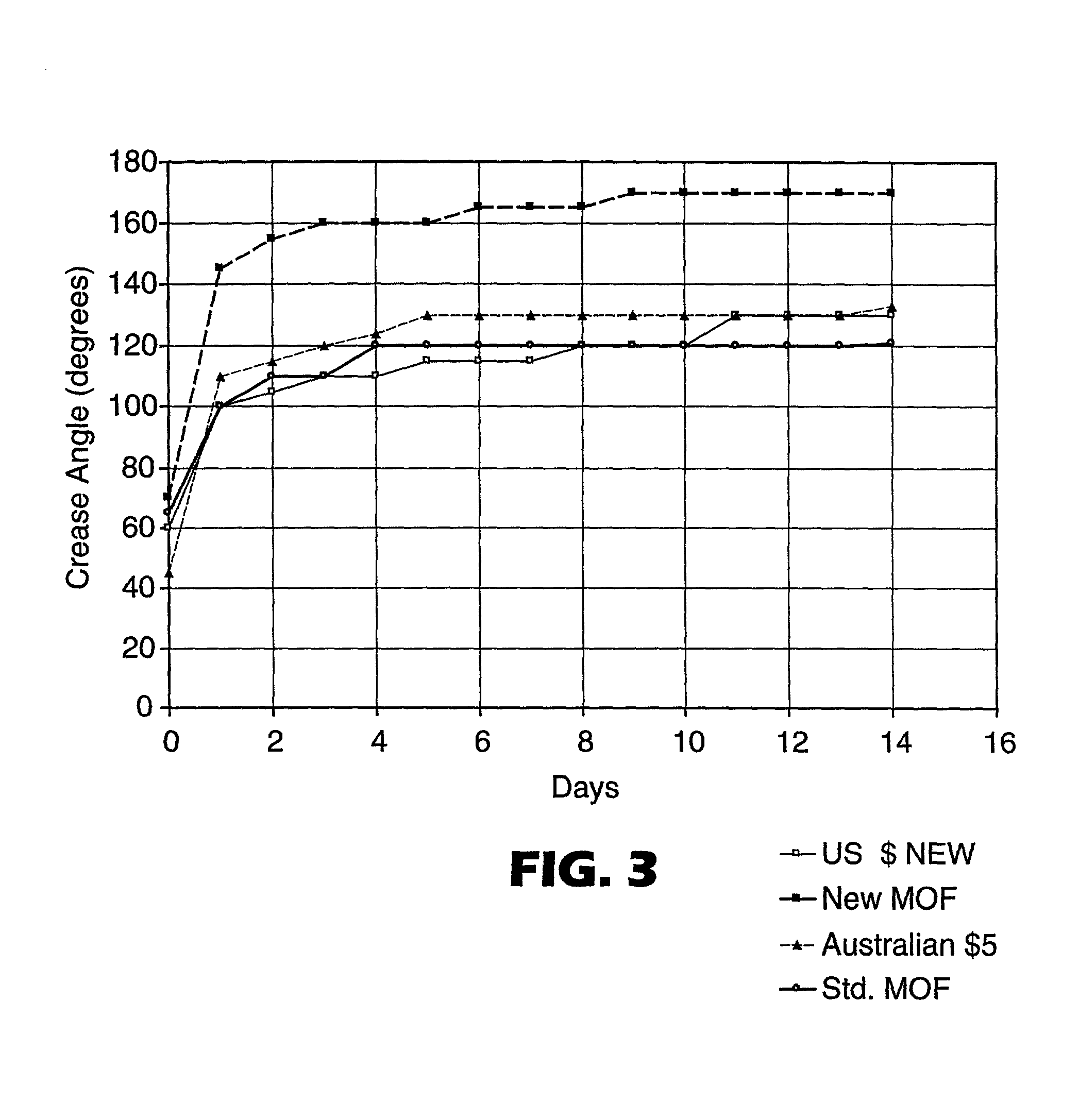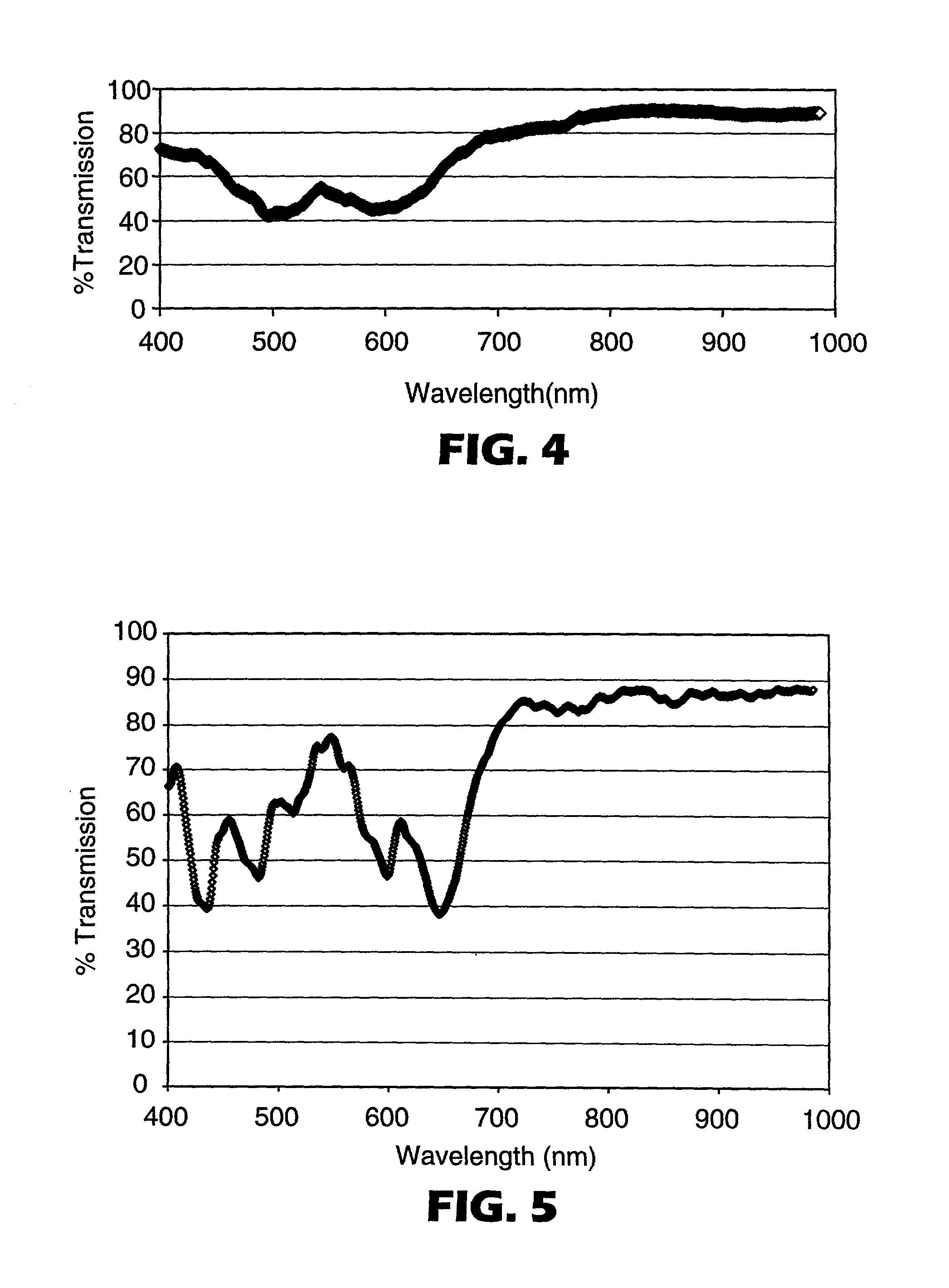Low Tg multilayer optical films
a multi-layer, optical film technology, applied in the direction of optical radiation measurement, instruments, polarising elements, etc., can solve the problems of researchers, inability to address the physical properties required for that application, and difficulty in reproducing with copying techniques, etc., to achieve excellent crease and crumple recovery, high refractive index birefringent
- Summary
- Abstract
- Description
- Claims
- Application Information
AI Technical Summary
Benefits of technology
Problems solved by technology
Method used
Image
Examples
examples
[0173] Monomers, catalysts, and stabilizers utilized in creating polymers for these examples are commercially available from the following suppliers: dimethyl naphthalene dicarboxylate from Amoco (Decatur, Ala.), dimethyl terephthalate (DMT) from Hoechst Celanese (Dallas, Tex.), ethylene glycol (EG) from Union Carbide (Charleston, W. Va.), 1,6-hexanediol (HD) from BASF (Charlotte, N.C.), triethylene glycol (TEG) from Celenese Ltd. (Dallas, Tex.), 2-butyl 2-ethyl 1,3-propanediol (BEPD) from Nesteoxo (Ghent Belgium), antimony triacetate from Elf Atochem (Philadelphia, Pa.), tetrabutyltitanate and triethylphosphonoacetate, both from Albright & Wilson (Glen Allen, Va.), polyethyleneglycol (PEG) from Union Carbide (Danbury, Conn.), trimethylolpropane (TMP) from Celenese Ltd. (Dallas, Tex.), sebacic acid (SA) from Arizona Chemical (Jacksonville, FL) and neopentyl glycol (NPG) from Eastman Chemical (Kingsport, Tenn.).
example p1 (
Preparation of PET)
[0174] The polyethylene terephthalate used in the following Examples can be synthesized in a batch reactor with the following raw material charge; 5,000 kg dimethyl terephthalate, 3,502 kg ethylene glycol, 1.2 kg manganese acetate, and 1.6 kg antimony triacetate. Under pressure of 1520 torr, this mixture is heated to 254.degree. C. while removing the transesterification reaction by-product methanol. After 1,649 kg of methanol was removed, 2.45 kg of triethyl phosphonoacetate is charged to the reactor and than the pressure is gradually reduced to 1 torr while heating to 280.degree. C. The condensation reaction by-product, ethylene glycol, is continuously removed until a polymer with an Intrinsic Viscosity of 0.60, as measured in 60 / 40 phenol / dichlorobenzene, is produced.
example 1 (
Preparation of Polymers--High Refractive Index Polymers)
[0175] Examples of CoPHT's containing comonomers for suppressing crystallization rates and Tg's are shown in Table I. These CoPHT's were cast into mono-layer film and oriented at the process conditions shown in Table II. Birefringence of these oriented CoPHT films was determined by measuring the refractive indices in orthoganol directions using a Metricon refractometer. The corresponding refractive indices and calculated birefringence are also shown in Table II.
1TABLE 1 coPHT Thermal Properties Thermal Sample# Comonomer Composition (mol %) Properties (.degree. C.) DMT HD PEG TMP Tm Tg A1 50 49.5 0 0.5 147 15 A9 50 47.5 2 0.5 136 -9.5 A10 50 45.5 4 0.5 128 -25 A12 50 41.5 8 0.5 118 -45 DMT HD TEG TMP Tm Tg A2 50 48.5 1 0.5 142 16 A3 50 47.5 2 0.5 143 15 A4 50 45.45 4 0.55 141 14 A5 50 41.5 8 0.5 137 14 A6 50 39.5 10 0.5 135 12 DMT HD EG TMP Tm Tg E16 50 39.5 10 0.5 119 21 DMT SA HD TMP Tm Tg A13 48 2 49.5 0.5 139 9.5 A15 47 3 49...
PUM
 Login to View More
Login to View More Abstract
Description
Claims
Application Information
 Login to View More
Login to View More - R&D
- Intellectual Property
- Life Sciences
- Materials
- Tech Scout
- Unparalleled Data Quality
- Higher Quality Content
- 60% Fewer Hallucinations
Browse by: Latest US Patents, China's latest patents, Technical Efficacy Thesaurus, Application Domain, Technology Topic, Popular Technical Reports.
© 2025 PatSnap. All rights reserved.Legal|Privacy policy|Modern Slavery Act Transparency Statement|Sitemap|About US| Contact US: help@patsnap.com



